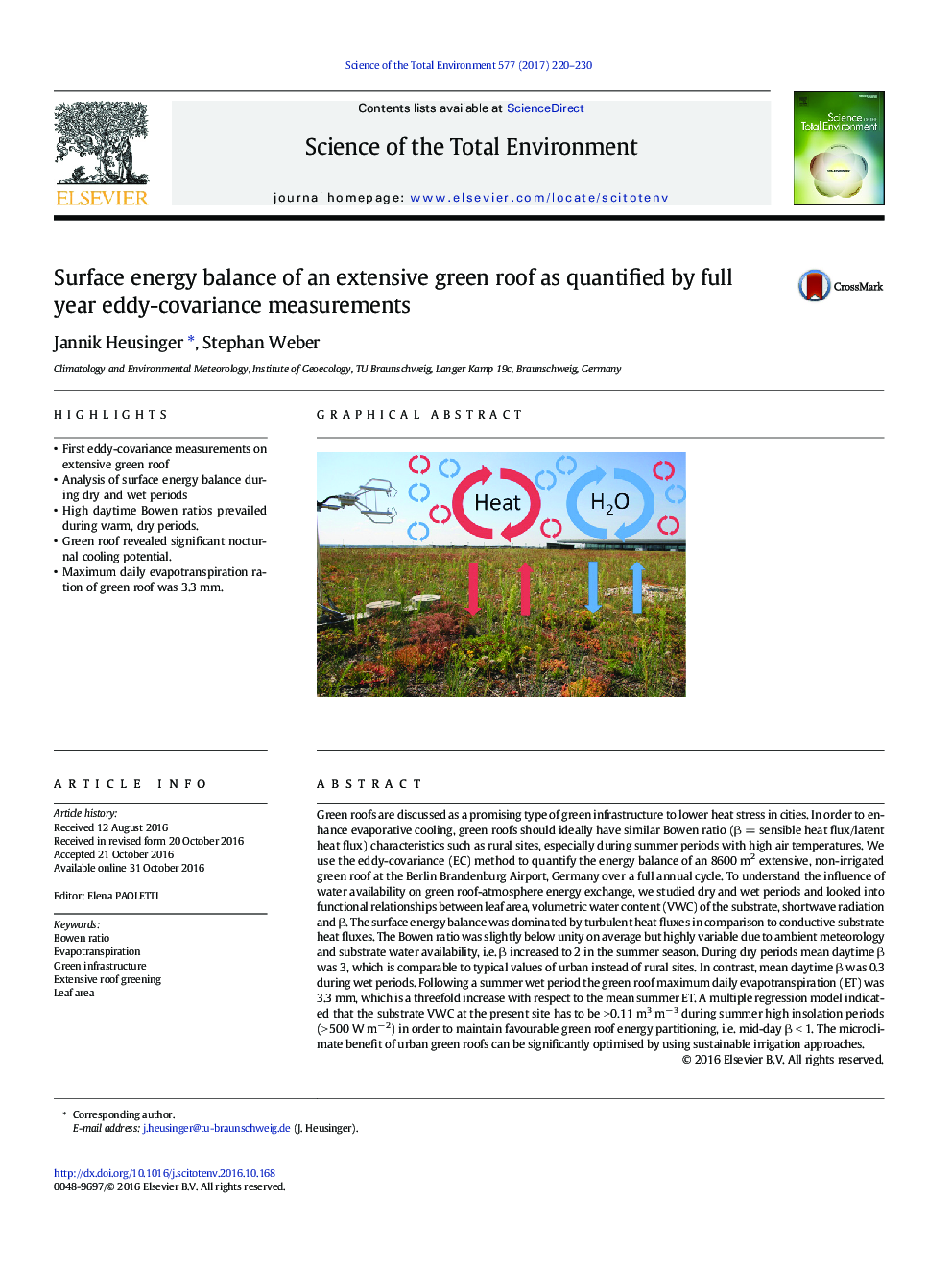| کد مقاله | کد نشریه | سال انتشار | مقاله انگلیسی | نسخه تمام متن |
|---|---|---|---|---|
| 5751721 | 1619714 | 2017 | 11 صفحه PDF | دانلود رایگان |
- First eddy-covariance measurements on extensive green roof
- Analysis of surface energy balance during dry and wet periods
- High daytime Bowen ratios prevailed during warm, dry periods.
- Green roof revealed significant nocturnal cooling potential.
- Maximum daily evapotranspiration ration of green roof was 3.3Â mm.
Green roofs are discussed as a promising type of green infrastructure to lower heat stress in cities. In order to enhance evaporative cooling, green roofs should ideally have similar Bowen ratio (β = sensible heat flux/latent heat flux) characteristics such as rural sites, especially during summer periods with high air temperatures. We use the eddy-covariance (EC) method to quantify the energy balance of an 8600 m2 extensive, non-irrigated green roof at the Berlin Brandenburg Airport, Germany over a full annual cycle. To understand the influence of water availability on green roof-atmosphere energy exchange, we studied dry and wet periods and looked into functional relationships between leaf area, volumetric water content (VWC) of the substrate, shortwave radiation and β. The surface energy balance was dominated by turbulent heat fluxes in comparison to conductive substrate heat fluxes. The Bowen ratio was slightly below unity on average but highly variable due to ambient meteorology and substrate water availability, i.e. β increased to 2 in the summer season. During dry periods mean daytime β was 3, which is comparable to typical values of urban instead of rural sites. In contrast, mean daytime β was 0.3 during wet periods. Following a summer wet period the green roof maximum daily evapotranspiration (ET) was 3.3 mm, which is a threefold increase with respect to the mean summer ET. A multiple regression model indicated that the substrate VWC at the present site has to be > 0.11 m3 mâ 3 during summer high insolation periods (> 500 W mâ 2) in order to maintain favourable green roof energy partitioning, i.e. mid-day β < 1. The microclimate benefit of urban green roofs can be significantly optimised by using sustainable irrigation approaches.
451
Journal: Science of The Total Environment - Volume 577, 15 January 2017, Pages 220-230
